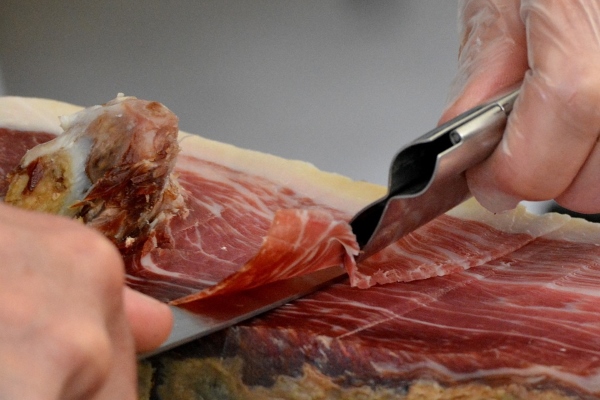
A low cost and portable analytical technique has been found to be effective in authenticating Iberian dry-cured ham and to detect fraud in the food’s labelling.
Researchers from the University of Córdoba, Spain, used gas chromatography (GC) coupled to ion mobility spectrometry (IMS) to detect the volatile compound profile of dry-cured Iberian ham from pigs fattened on acorn and pasture and those fattened on feed. The data was used to classify the meat and to detect possible labelling fraud.
The research has been published in the journal Food Chemistry.
According to the researchers, Iberian ham is highly susceptible to fraud because of the quality and price differences that occur depending on how Iberian pigs are fed.
Acorn-fed ham comes from Iberian pigs raised on free‐range farms with a diet of acorns and grass, while feed-fed ham comes from pigs raised on confined farms and fed with concentrated feed.
“Labelling fraud is a serious problem that causes major economic loss in the sector, since in many cases Iberian hams from pigs fed with concentrated feed are labelled as Iberian acorn-fed hams,” the researchers said. “Despite this problem, there are no analytical methods included in current legislation to control and ensure the authenticity of final dry-cured products or detect possible fraud in their labelling.”
While there has been increased interest in analytical techniques to distinguish the feeding diets of Iberian pigs in recent years – including mass spectrometry, and biomarker and stable isotope analysis – the researchers focused on the emerging food fraud technique of ion mobility spectrometry, which is based on gas phase ion separation inside a drift tube under the influence of a constant electric field at atmospheric pressure.
Coupling this with gas chromatography, along with different chemometric strategies, the researchers explored the potential of the technique for the first time in differentiating the two types of dry-cured Iberian ham. The scientists tested 24 samples, 12 of each ham type.
The researchers found that the optimum heating time for the samples, based on the intensities of the signals through the formation of volatile compounds, was 20 minutes with an incubation temperature of 70 deg C.
The resulting spectra of the two ham types showed a difference in signals. “In general, spectra of acorn-fed ham samples were richer in signals than spectra of feed-fed ham samples. A great variety in the spectra profiles of the feed-fed ham samples was observed due to the variable composition of the feed with which pigs are fed… There are certain markers that are only present in the acorn-fed ham samples and do not appear or are less intense in feed samples,” the research found.
Two different chemometric approaches were explored to then process the two-dimensional GC–IMS measurements. The first, slower and more data intensive strategy involved the use of the whole spectral fingerprint, while the second and faster strategy was based on the choice of up to 44 significant signals or markers present in the spectra.
“Differences were evident in term of signal intensities, in particular, acorn-fed hams showed higher concentrations of all markers (probably aldehyde and ketone compounds) compared to feed-fed hams,” the research found after using the second strategy.
The classification rate for the first strategy was found to be 90% after a false positive (one feed sample was classified as an acorn sample) was obtained, while the classification rate for the second strategy was 100% with all samples correctly classified.
The researchers concluded that a GC column coupled to an IMS detector had potential to classify Iberian ham. “Both [chemometric] approaches provide promising results and a clear distinction between acorn-fed ham and feed-fed ham samples was observed after discriminant analysis.”
The researchers added that the use of the whole fingerprint would not be necessary to correctly classify samples. “The selection of 16 markers for each column was enough to obtain a perfect classification of all samples.”
“GC–IMS is a very useful tool to ensure the authenticity of Iberian dry-cured ham and detect possible frauds in their labelling. Moreover, its relative low cost compared with other methodologies and portability working at atmospheric temperature and pressure, make it easy to implant in agri-food laboratories,” the researchers concluded.
©
SecuringIndustry.com





